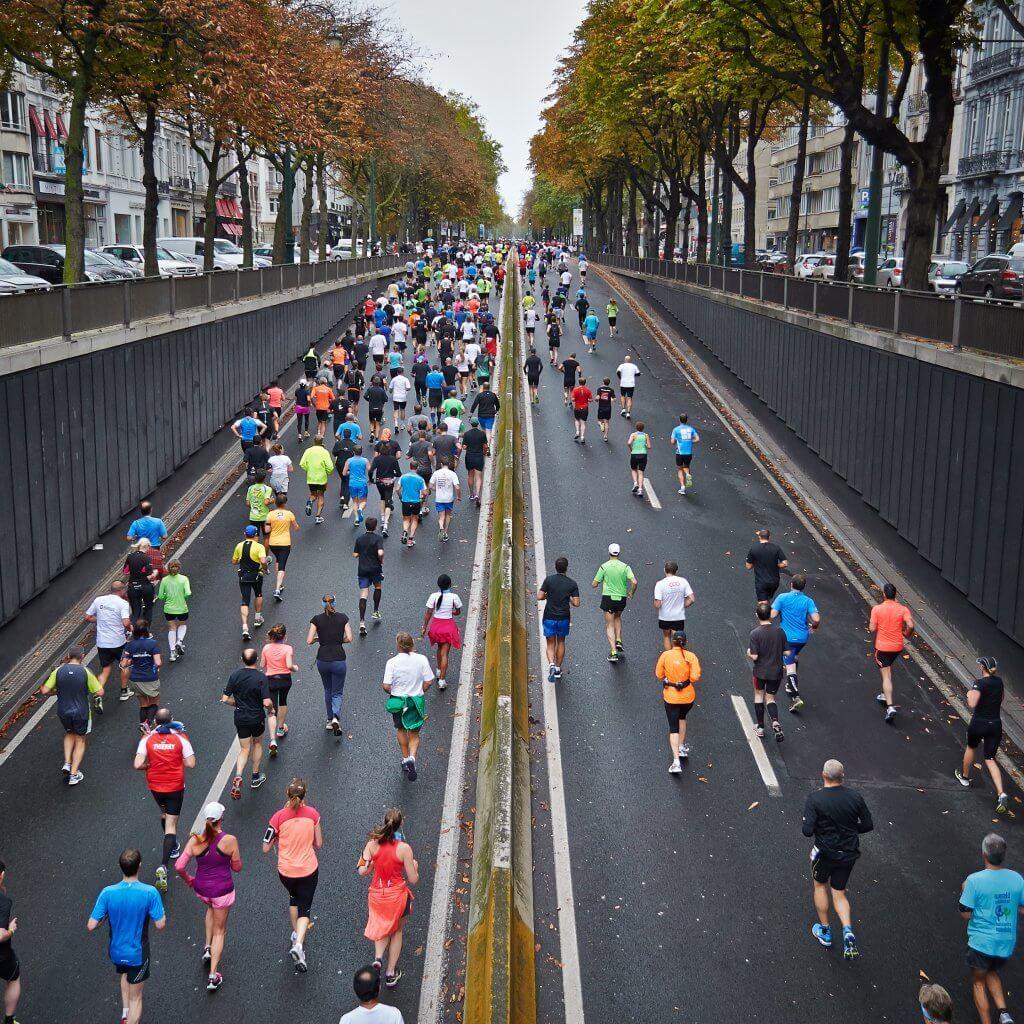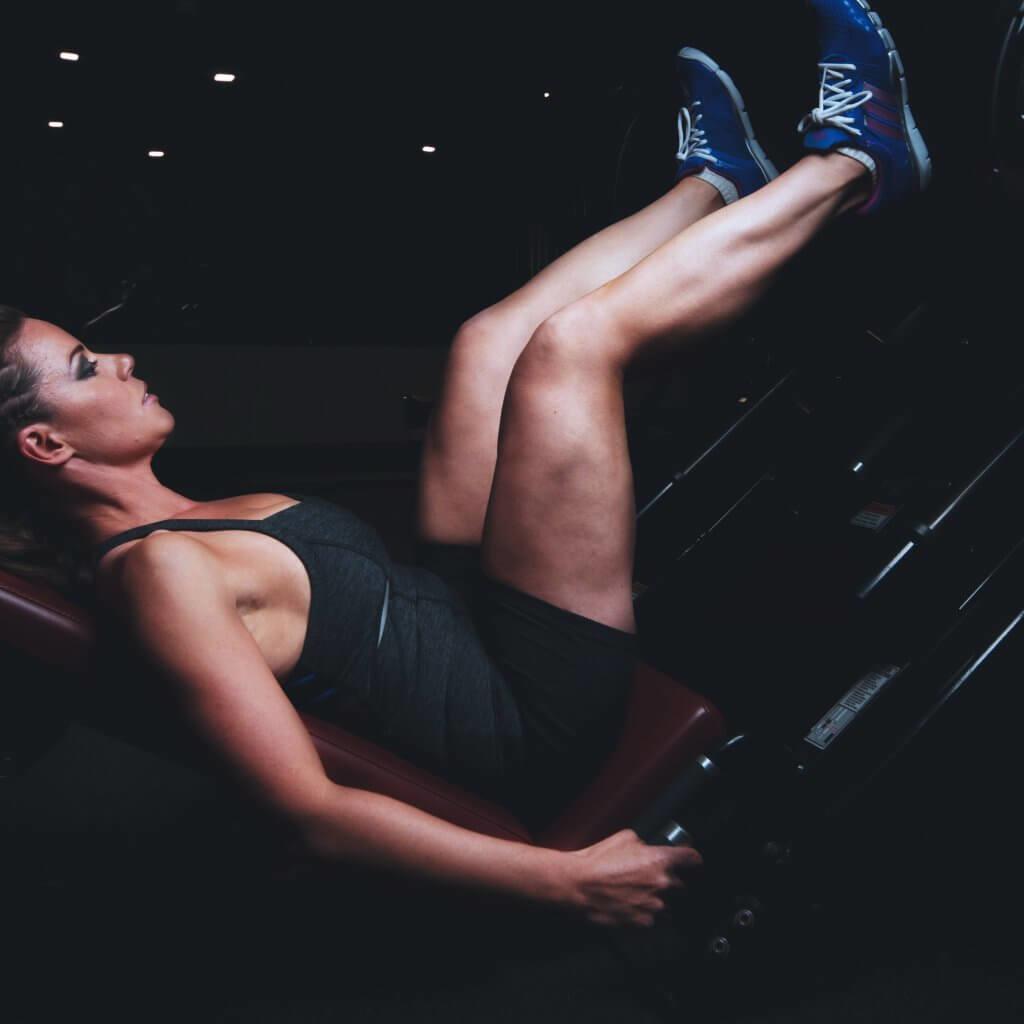When Should You Return to Strength Training After a Goal Race?

The marathon or half marathon went great.
You hit your goal pace, you avoided the wall, your nutrition strategy was right on target, and you saved enough in the tank at the end to sprint past a few people on the way to the finish line.
Now you’re 48 hours past your goal race, and you’re no longer lurching down the stairs like a stiff-legged Frankenstein. You’re ready for some activity.
You know you’re supposed to take time off from running after your big race. But what about strength training?

I must admit, I’d never encountered this question until this year. Like many runners, I’ve had an uneasy relationship with strength training, sort of like the college frat boy who fears commitment. I’d flirt with doing it regularly but ultimately drop it after a few sessions that either left me too sore to run (defeating the point) or too bored to continue. Let’s just say #bicepcurlssuck.
Late last year I had an epiphany, however. I realized that perhaps my chronic IT band pain in longer races, laughable upper body strength, and tendency to burn out after a long training cycle might be addressed by actually following through on a strength plan. Maybe a tighter core could help me power through the end of a tough race.
And so, diligently, dutifully — and at times reluctantly — I’ve been attending a twice-a-week boot camp class packed with thigh-burning squats and tricep-toning lifts. After five months of consistent attendance, I discovered I actually have biceps. Cool.
So fast-forward to two days after my most recent half marathon on Sunday, and I was absolutely astonished to note that while I had zero desire to run, I was eager to get back to the gym.

But was that a good idea? The truth is, there’s no one-size-fits-all answer. Researchers agree that it depends a lot on your fitness level and how far your goal race was and a number of other factors. Here are a few things you should take into consideration before starting up your strength training again.
1. Fitness Level
Are you a pretty fit runner? Do you train regularly? Have you been strength training for more than a few months?
If you answered yes to these questions, then you can safely return to strength training after just a few days. Remember, though, fitness doesn’t always correlate to speed. Fit people may not be the fastest on the course, so calculate your fitness level based on other factors as well, such as heart rate when you train, amount of weight you lift, and how quickly you regain your breath after intervals.
2. Length of the Race
If you ran an ultra, a marathon or a half marathon, you will need more time to recover than you would after a 5K or 10K. Your body has suffered a trauma of sorts. Distance races put the body under strain. You suffer cellular damage and inflammation, and your muscles are sore.
Don’t push it. You won’t get any ribbons for “first one to return to the gym after a race.” Wait at the very least until you’re no longer sore to even consider going back to strength training. You may want to add a few days after that for recovery purposes as well. After all, doing a poor workout is probably worse than doing no workout at all, because your body is telling you it wasn’t ready.

3. Immune System Strength
When you race a marathon or ultra marathon, you can compromise your immune system. You’ve probably noticed this – days before or after the race, you come down with a cold you just can’t shake. It lingers for days, and you’re miserable.
Again, your body is sending you a message, and that message is “Please, for the love of all that is holy, let me sit a few days!” Colds that linger can turn into something worse, such as a sinus infection, if you push yourself too soon. Take a minimum of a week off after the goal race, and check in with yourself at that point to see if you’re ready. Don’t feel guilty about adding more rest days. Your fitness won’t suffer; it takes more than two weeks to lose muscle tone gained through strength training.
4. History of Injury
If you’re injury-prone, then you need to baby your body after a big race. You don’t want a plantar fasciitis flair or revenge of the IT band. If you must do some light activity, try stretching or walking. No, they don’t deliver the same return as crunches and lunges, but going too hard may be what makes you injury prone in the first place.
Treat your body like a new GPS watch. Give yourself time to figure it out. Baby it. Be patient.
Rushing back into the gym could send you to the sidelines if you tend to suffer repetitive use injuries, and you certainly don’t want that.

5. Age
Yeah, I know this one stinks. Believe me, I wish I could train like a twentysomething again, but the reality is that the older you get, the more time your body needs to recover. I’m 40, and while I’ve never been stronger in my upper body, I’ve also never needed recovery days more. It will be at least seven days before I make my grand return to boot camp, and I may wait longer than that if my IT band remains tender.
All you young whippersnappers, you can feel free to slice a few recovery days off your schedule. Your body heals cellular damage more quickly than mine. But make sure you aren’t jumping back into your routine just to prove how young and healthy you are. Remember, you’re not proving anything to anyone by getting back in the gym too soon … except maybe proving to yourself that you need to listen to your body better.
Better safe than stupid is what it comes down to. While I hate wasting the money on a gym membership, I’m foregoing for a quarter of the month. I hate the idea of getting injured for the long term even more, especially now that my bicep is showing.
Latest Articles
 Is Running on a Treadmill Easier Than Running Outside?Runners have their own preferences, whether it is treadmill running, running outside on the road, or exploring trails. So...
Is Running on a Treadmill Easier Than Running Outside?Runners have their own preferences, whether it is treadmill running, running outside on the road, or exploring trails. So... Is It OK to Use Trail Running Shoes on the Road?While trail running shoes can be used on roads, especially in situations where a runner encounters mixed terrains or pref...
Is It OK to Use Trail Running Shoes on the Road?While trail running shoes can be used on roads, especially in situations where a runner encounters mixed terrains or pref... How to Fix Sore Quads After Running?Rest, ice, gentle stretching, and over-the-counter pain relievers can help soothe sore quads after running. Also, ensure ...
How to Fix Sore Quads After Running?Rest, ice, gentle stretching, and over-the-counter pain relievers can help soothe sore quads after running. Also, ensure ... 10 Fruits With The Most Electrolytes to Replace Sports DrinksThese fruits are high in electrolytes such as potassium, magnesium, and calcium, essential for hydration, muscle function...
10 Fruits With The Most Electrolytes to Replace Sports DrinksThese fruits are high in electrolytes such as potassium, magnesium, and calcium, essential for hydration, muscle function...

